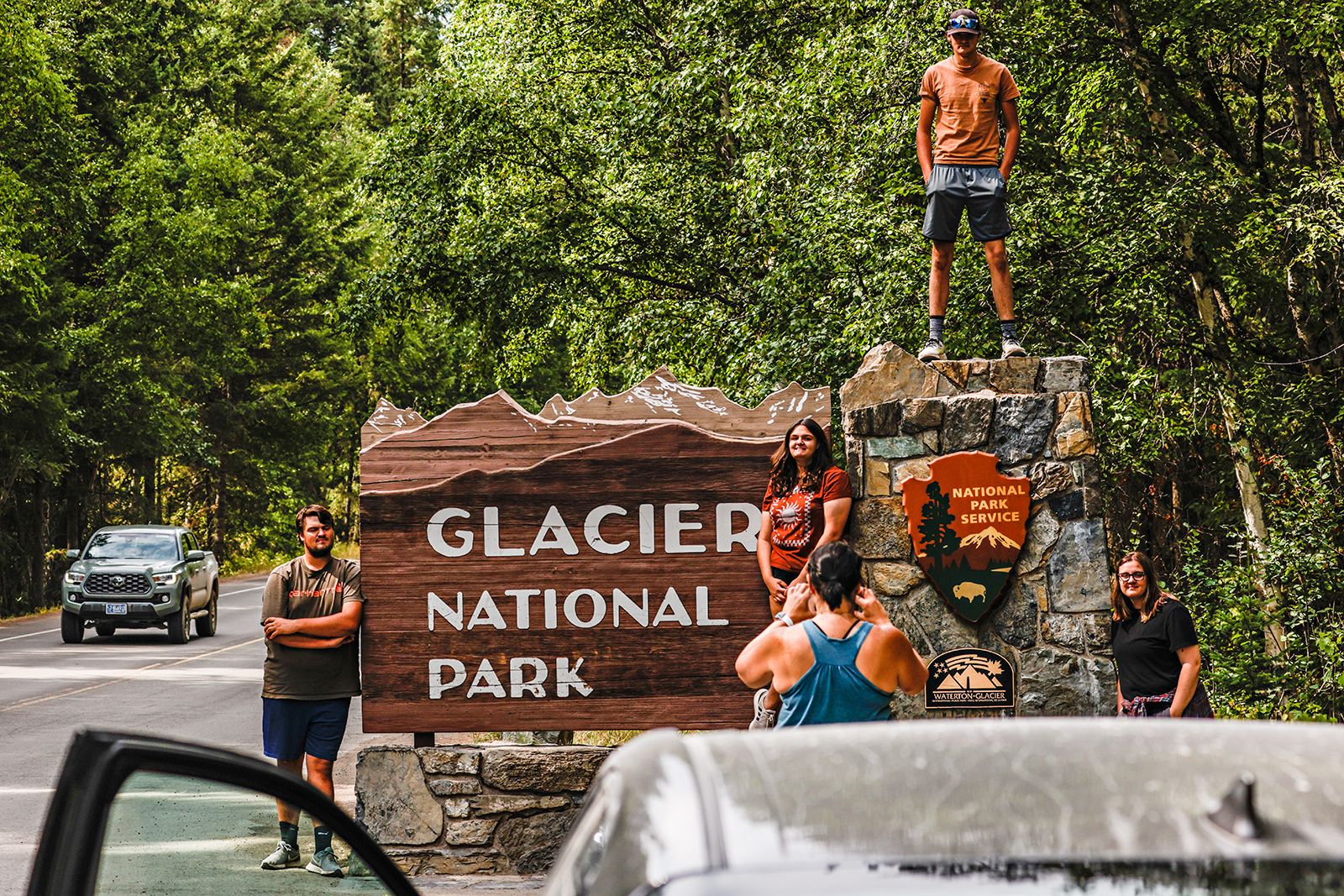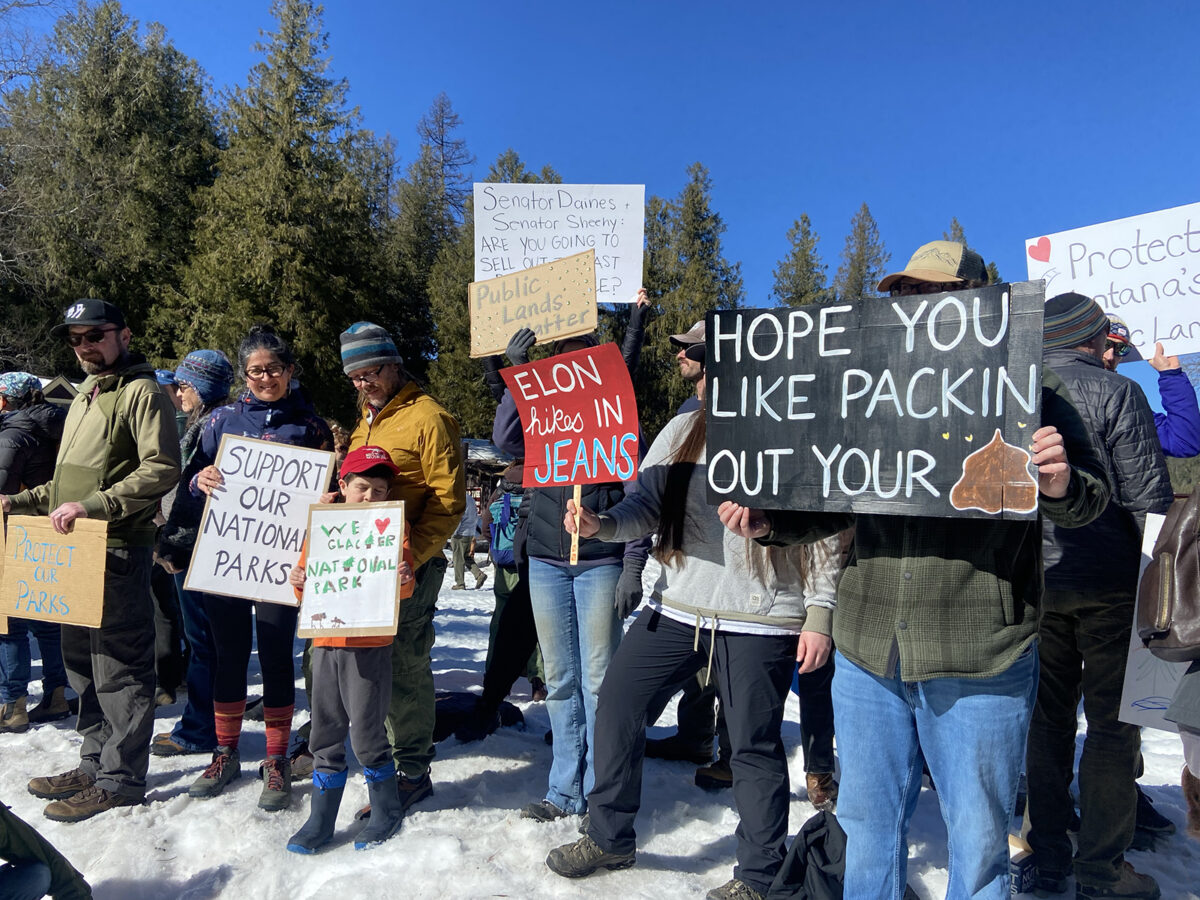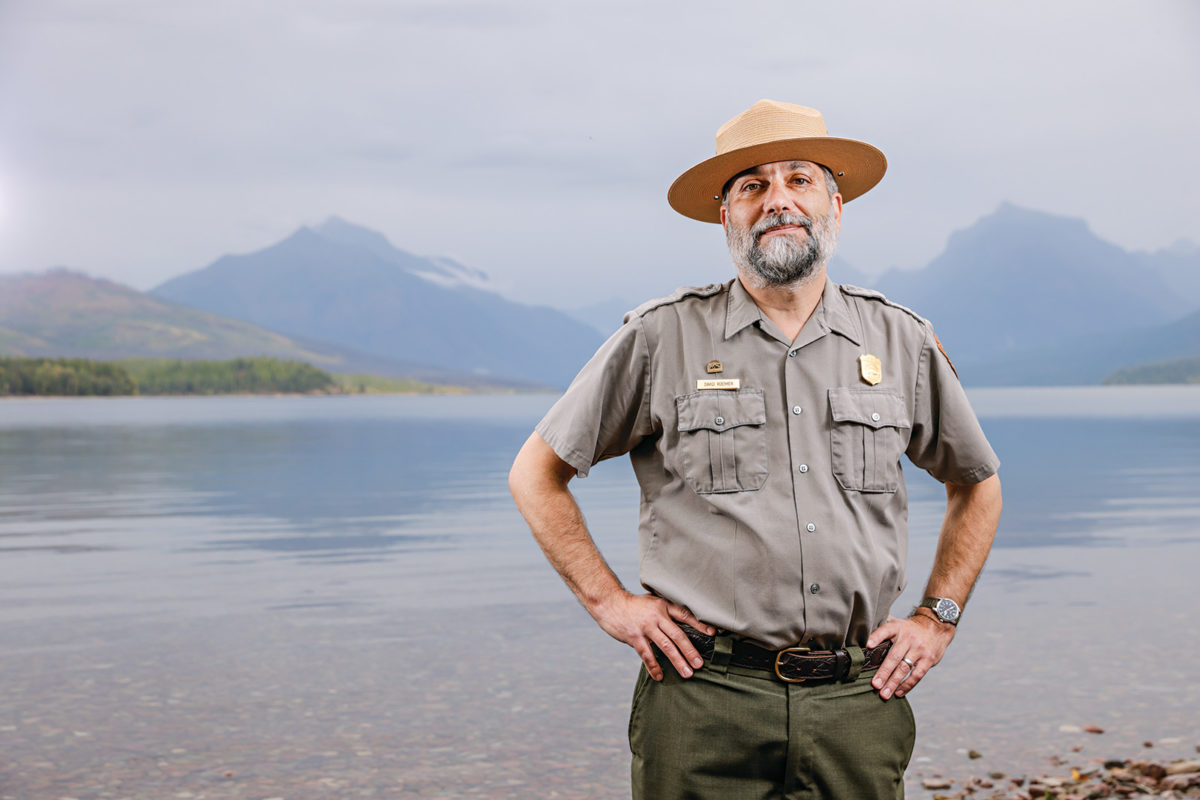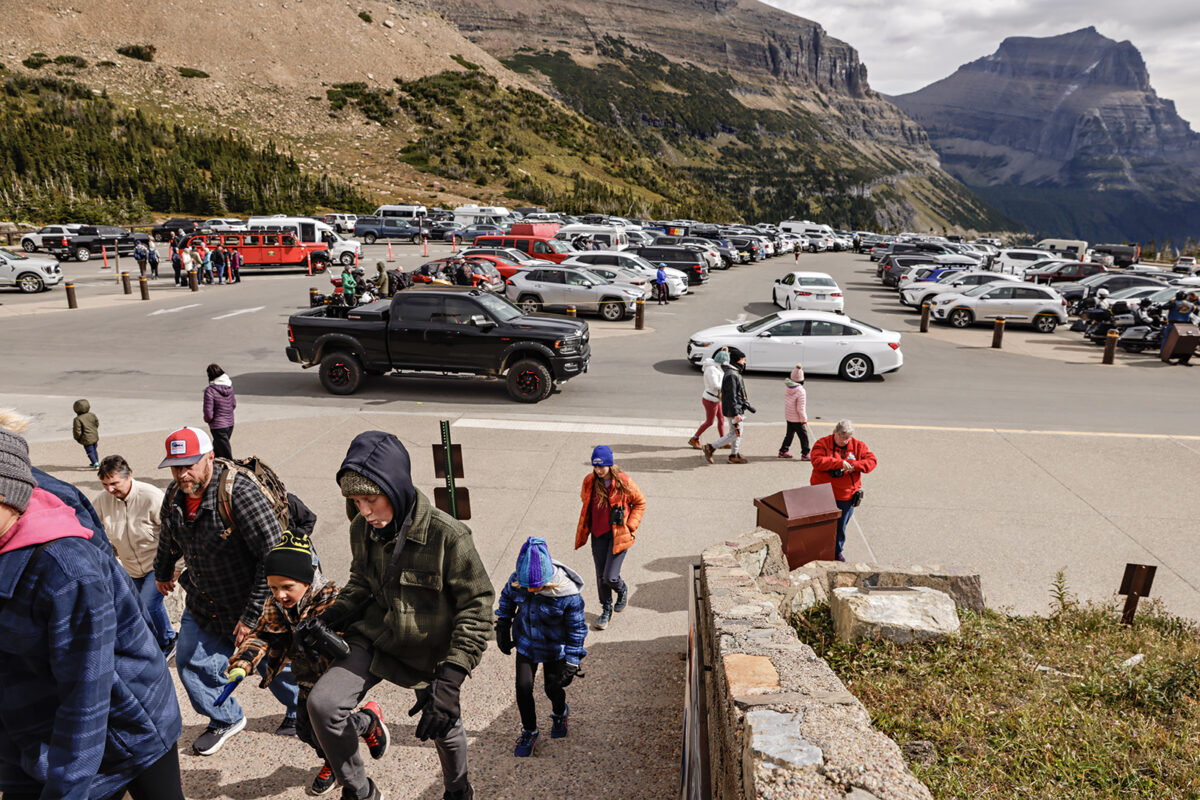Despite Hiring Headwinds, Glacier National Park Makes Headway on Summer Staffing
Even as park officials bolster the workforce with seasonal recruits, challenges persist as scores of Glacier Park employees face a March 26 deadline to accept buyouts or early retirement
By Tristan Scott
As the Trump administration toggles between hiring and firing government employees as part of its chaotic effort to scale down the federal workforce, Glacier National Park has been gradually reassembling the ranks of its seasonal staff ahead of the busy summer season.
Until recently, it was unclear whether the park’s administrators, facing a hiring freeze and the abrupt termination of all probationary workers — directives that arrived on the heels of Glacier’s second-busiest year of visitation on record — could muster a functional cadre of summertime staff. The deficit of seasonal positions included snow plow operators, law enforcement rangers, dispatchers, interpretive park rangers, entrance station staff, visitor center workers, grizzly bear biologists, trail crew workers, search-and-rescue specialists, and other operational employees.
Following the thawing of a hiring freeze, however, the road crew tasked with plowing the Going-to-the-Sun Road is on pace to achieve operational strength just in time to fire up its fleet of plows and excavators on April 1, while about 300 recruitment actions are underway to fill the various seasonal roles. (Glacier runs on about 325 seasonal employees every summer.) Human resource departments have regained access to staffing software, allowing them to coordinate job offers and formal acceptance letters; as of Thursday, 101 prospective employees had accepted job offers and confirmed their summer start dates at Glacier Park, according to an all-staff email obtained by the Beacon.
Blanket restrictions on the agency’s spending authority have also eased slightly after an executive order last month placed a $1 limit on government credit cards across the Department of the Interior, narrowing purchasing authority across the National Park Service to a single supervisor for the entire Intermountain Region and disrupting basic operations such as maintenance and repairs, as well as fuel and supply purchases. And on March 20, under court order, the agency received authorization from the White House to fully reinstate 1,000 previously terminated probationary employees at national parks across the country.
The notice dictates that the positions include those related to public safety, national security and critical park operations. The reinstated employees will also receive backpay.

Even so, administrators at Glacier National Park face a long and challenging path ahead as they scramble to reboot their seasonal hiring apparatus to accommodate the millions of visitors who converge on the 1-million-acre park every summer.
“Because of Glacier’s hyper-seasonal visitation window, we start this hiring process in August to prepare for the next summer season,” Paul Austin, who retired last year as Glacier National Park’s chief ranger after 28 years of federal service, told the Beacon. “Given the roadblocks we’ve seen in the last month or so, Glacier has not been able to hire its seasonals efficiently or effectively. A lot of the folks who were hired in the fall were terminated, so that hiring process had to be reinitiated with a lot of additional steps to go through. Maybe it will all work out and come together, but with everyone trying to get through the pipeline at once, there’s going to be some rough starts and it’s going to be a lot harder to do business as usual.”
For Glacier National Park Superintendent Dave Roemer, who as part of the recent restructuring directive was assigned to oversee operations at Grant-Kohrs Ranch National Historic Site in Deer Lodge, a role he’ll assume in addition to his administrative duties at Glacier, doing “business as usual” has unusual connotations this year.
“The pace of change continues to keep us on our toes,” Roemer wrote Thursday in an all-employee email obtained by the Beacon. “One of the things I’m tracking is the good progress we’re making in recruiting our team for the summer. We have around 300 recruitment actions in-progress as of today, and I count 101 that have made it all the way through with final offers accepted and start dates confirmed. I am gladdened by the many familiar faces that will be returning to us and the overall pace that we’re making in preparing for the summer season. Thanks to supervisors and HR and everyone for prioritizing this work it is satisfying to be reducing our uncertainty and welcoming folks back to Glacier.”

The latest “Superintendent’s Update” served the dual purpose of enhancing employee morale while bringing staff up to speed on the latest developments.
Roemer’s latest update, while couched in caveats, signaled a more optimistic tone than the all-staff memo that leaked three weeks earlier. In that Feb. 28 email, Roemer wrote that “the pace and magnitude of change in the past month has been unlike any I’ve seen in my career, with colleagues at Glacier and at other parks and agencies impacted by employee terminations, the deferred resignation program, and severe limitations on hiring and spending at the exact moment when we need to be preparing for summer.”
The recent update is also couched in clearheaded caveats about the looming cuts outlined last month when the U.S. Office of Management and Budget (OMB) and the U.S. Office of Personnel (OPM) issued a memo calling for a 30% reduction in force, sparking further uncertainty about whether those cuts include the undisclosed number of park workers who already accepted buyout offers from Elon Musk’s U.S. DOGE Service.
Meanwhile, longtime park employees are considering a new buyout offer from the Interior Department distributed Monday to most of its employees.
The offers include a Voluntary Early Retirement Authority (VERA) option, which allows agencies undergoing major restructuring to temporarily lower the age and service requirements in order to increase the number of employees who are eligible for retirement; and a Voluntary Separation Incentive Payment (VSIP) Authority, also known as buyout authority, allowing agencies that are downsizing to offer employees lump-sum payments up to $25,000 as an incentive to voluntarily separate.
“I need to balance my optimism with the frank acknowledgement that we are in the middle of a VERA/VSIP offer that a great number of Glacier employees are eligible for,” according to Roemer’s email. “After the offer closes next Wednesday and the dust settles, we might look around our workplaces and see fewer friends and colleagues. I hope that everyone will make the decision that is right for you, based on the best information you can get.”

Not all employees are eligible for consideration, with exceptions including wildland firefighters, emergency responders, law enforcement, dispatch, aviation, some human resources, and cyber security positions.
To meet the minimum age and service requirements under VERA, eligible employees must be at least 50 years old with at least 20 years of federal service, or any age with at least 25 years of federal service.
At Glacier Park this week, numerous employees were grasping for additional guidance about whether to accept a severance payment and leave the agency this spring, according to employees who spoke to the Beacon on the condition of anonymity, or roll the dice and face the specter of future layoffs.
While stakeholder and advocacy groups cheered the reinstatement of probationary employees mandated by the courts, they warned that national parks remain in crisis.
The National Parks Conservation Association (NPCA) described the latest round of resignations and buyout offers as “just the latest pressure tactic in the administration’s ongoing effort to dismantle the Park Service — coercing staff to either leave or endure the constant threat of more firings while being stripped of the essential tools and resources needed to do their jobs, including eliminating purchasing ability, cancelling office leases and banning travel.”
“This chaotic whiplash is no way to manage the Park Service, especially as they are welcoming millions of visitors right now,” according to a statement from Theresa Pierno, president and CEO of the NPCA. “This administration needs to stop playing games with the future of our national parks.”
When Denise Germann retired in 2021 after 34 years of government work, including 17 years with the National Park Service (including five years at Glacier) and 17 years with the USDA Forest Service (including seven years at the Flathead National Forest), she was able to reflect on a mission-driven career in public service.
“The people who go to work for the National Park Service or the Forest Service are a unique breed. They love the outdoors and what it represents, they love this nation’s natural and cultural history,” she said. “It’s such a passion for so many of us. But who wants to work right now in this world of uncertainty? With all this chaos? I’m glad I’m retired. But I feel for all these people who are just starting their career under these circumstances, because I remember my start as magical.”

Former Glacier National Park Superintendent Jeff Mow, who helmed park operations from 2013 to 2022, said the administration’s strategy of pressuring federal workers to retire is disheartening. Since retiring three years ago, Mow has joined the executive council of The Coalition to Protect America’s National Parks, and recently took part in a roundtable discussion organized by the Senate Interior-Environment Appropriations Subcommittee.
“Park superintendents today are having to navigate through a great deal of ongoing chaos and uncertainty associated with staffing reductions, hiring freezes, lease terminations, and reduced capabilities to manage national parks,” according to his statement to the subcommittee. “This comes after an increase in visitation of 16% and a decrease in staffing of 28% since 2010. Further staff reductions as proposed will imperil the National Park Service’s ability to be stewards of our nation’s natural and cultural resources while providing outstanding visitor experiences.”
At Glacier, Mow said it’s important for the public to realize that the park already operates from a deficit, and its staff is already strained due to a a steady vacancy rate between 10% and 15% due to retirements and turnover. Those “background vacancies” presented challenges during Mow’s tenure, which included helping shepherd Glacier through destructive wildfires, government shutdowns, the crush of record-breaking visitation, and a once-in-a-century pandemic.
Reflecting on what the National Park Service has already endured this year, Mow said he can’t recall a more trying time for “America’s Best Idea.”
“This is a year like no other,” he said. “And I think it’s really going to test people’s ability to deal with and adapt to uncertainty.”
Now, many Glacier employees are looking to shed some of that uncertainty by attending a training session to help them decide whether a buyout offer is the right fit for them, a difficult decision Roemer acknowledged in his all-staff email.
“When I started in the NPS I never thought this would be a career for me. On good days – and on challenging days – I feel fortunate to get to work on things that matter to me,” he wrote. “I want you all to know that regardless of your decision, I’m deeply grateful for your service at Glacier and want your work and careers with the NPS to fill you with the pride and respect that is deserved.”